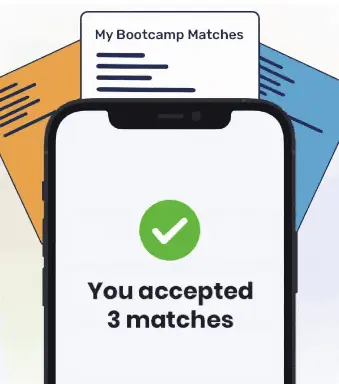The cost of general aviation training is high, and professional aviation training costs are even higher. However, if you dream of becoming a pilot, we’ll teach you how to pay for flight school, as we’ll take a deep dive into alternative ways to pay for general or professional flight training.
There are several ways to pay for flight school without loans. For example, you can get flight training scholarships, or even get an employer sponsorship for pilot training. Realizing your dreams will depend on your specific situation. Below, we will discuss the details of how to afford flight school.
How Much Does Flight School Cost?
Flight school training costs differ and will depend on your goals, such as the type of license or certification you’re going for, as well as other factors like location and required course materials. For example, training to become an airline pilot costs more than sports pilot training. Costs are usually for the flight training itself, the ground school, airplane rentals, test fees, and more miscellaneous fees that will come up. In general, Federal Aviation Administration–approved pilot training costs can range from less than $10,000 to more than $100,000.
If you receive your flight training as part of a university degree program, you’ll need to pay for the flight training in addition to standard university tuition fees, but the training will typically be cheaper than it would be through a private company. For example, if you’re receiving flight training as part of Bridgewater State University’s Aviation Science program, you will pay less than $13,000 for private pilot training.1
Can I Pay for Flight School Without Loans?
Yes, you can pay for pilot school without having to borrow money. If you don’t want the burden of student debt, there are many ways for you to avoid loans when undergoing a pilot training program. Here are five tips to help you avoid flight school loans and still get funding for flight school.
Top 5 Tips to Avoid Flight School Loans
- Save money. While this may seem like a no-brainer, some people simply do not have the capacity for saving money to enter an aviation program. However, if you are serious about going to flight programs, consider the flight training costs and save money over time to be able to afford it.
- Consider a tech career. It’s no secret that a career in tech pays better than most jobs on the market. The salary that you’ll get if you switch to a tech career could be added to your flight training funds. You will not only have a pilot license but a lucrative tech career, as well.
- Research scholarships. Many scholarships cater to flight school students from underrepresented groups or with exceptional financial need. If you qualify for a scholarship, then you no longer have to take out a flight training loan. Research and apply to as many scholarships as you can until you get accepted by one.
- Work at your flight school. One of the best ways to score discounted tuition is to become an employee of your flight school. You can use employee discounts to lessen the cost of flight school and may even get flight lessons from professional pilots at the school.
- Go for Airline-Sponsored Pilot Training. If you plan to become a commercial pilot, ATP Flight School offers airline-sponsored pilot training. When you choose to be sponsored by an airline, you commit to being a pilot for a specific airline once training is complete. The airline will then give you tuition reimbursement, as long as you remain an employee with them for the specified amount of time.
How to Pay for Flight School: 9 Ways to Pay for Flight School
1. Airline-Sponsored Training
Many major airlines provide education benefits to potential pilots. They help student pilots cover the costs of flight school to help cope with the demand for pilots. Through an airline-sponsored training program, you would be hired by a specific airline to train and then eventually work for them as a pilot. You will have to pass the evaluation and training to qualify.
2. Credit Card Payment
Credit cards can be a viable way to pay for flight training if you’re going to pursue a private pilot certificate or are learning to fly as a sport or recreational activity. Many flight schools offer to let you pay as you go. If you have a low-interest credit card, you can use this to pay for your flight training.
You will still have to pay the money back, but credit cards are useful if you don’t have the money to pay for flight training upfront. Some credit card companies also offer zero percent interest rates, plus points and cashback bonuses.
3. Federal Student Loans
Another way to pay for pilot school is through federal loans. However, this type of financial aid is available only to student pilots who attend accredited aviation schools. Most universities and colleges are accredited, while most independent flight schools are not.
If you are planning on attending a university for a Bachelor’s Degree in Aviation program, then there should be no problem attaining a federal student loan to cover tuition costs. However, if you’re attending a local flight school, check with them before applying to find out if you’re qualified for Federal Student Aid.
4. Private Student Loan
Flight school tuition is very expensive, and the cost will largely depend on which type of license you’re going for. There are a variety of private lenders that offer loans for aviation training and flight school. These flight school lenders have loan options specifically catered to those who want to learn how to fly, meaning that they have more favorable terms for you. Some also include living expenses for those who need help covering rent, utilities, or groceries.
Likewise, you can get loans from pilots’ associations or institutions, like the Aircraft Owners and Pilots Association (AOPA) and Flight Training Finance. The interest rates will be based on your credit score and debt-to-income ratio. Flight school loans typically have much lower interest rates than loans from credit unions—though of course, with both options you’ll usually end up paying more than the total tuition amount.
5. GI Bill
If you’re a military member or veteran, you can use the GI Bill to pay for your flight training. This is one of the military benefits you get as a veteran. However, you must already have a private pilot’s license if you will be using your GI Bill, and the school itself must be eligible for the benefits. If you meet the requirements, you can use the GI Bill for a more advanced license without paying a single thing.
6. Pell Grant
Federal Student Aid can help finance your education. If you are eligible, you can receive a Pell Grant, which you don’t have to repay after you finish your aviation degree program. However, take note that the Pell Grant is not available for flight training on its own. You have to be applying for a bachelor’s degree while attending flight school.
7. Personal Loan
Check out banks that offer a private loan for a variety of reasons, and you might have your ticket to learn to fly. Some banks do not even bother asking what the funds will be used for and have a fixed rate or fixed monthly payment until the loan is paid off. If you’re looking at a large expense, perhaps you can put away a few hundred dollars to pay off the loan.
Personal loans are helpful for avoiding the stress and hassle of coming up with an upfront payment for flight school, which will be a huge sum of money. Check how much you can borrow, the interest rate, and the repayment terms that your bank offers before you file a loan to make sure that you can budget for the payment every month. And remember that with this option, you’ll ultimately end up paying more than the initial price.
8. Scholarships
There are many scholarships available for students who are attending a university and at the same time attending flight training. If you’re just going to earn a license and not attend university, many organizations offer flight scholarships as well. The eligibility requirements vary based on the organization.
9. Work as a Flight Instructor
One of the smartest ways to earn your airline transport pilot position is to earn a certificate as a Certified Flight Instructor (CFI). One of the reasons why earning a commercial pilot license is expensive is because of the number of hours you have to practice flying. If you are a flight instructor, the hours you spend teaching others to fly will count as flight hours you need for your license.
Plus, you get paid for teaching others, which you can now use to pay for the cost of tuition. Talk to your flight school if you’re interested in this option, and they may be able help you out. However, note that you will already need a private pilot license and a flight instructor license before pursuing this option.
Is Going to Flight School Worth It?
Yes, going to flight school to become a pilot is worth it for many aspiring pilots. According to the U.S. Bureau of Labor Statistics, overall employment for commercial pilots is expected to 6% through 2033, and have a median salary of $122,670.2,3
How to Pay for Flight School FAQ
Becoming a pilot should take you three to four years. This is the length of time you will use to earn a Bachelor’s Degree in Aviation. To fly as a commercial pilot, you need at least 250 hours of experience flying.4
The following airlines may pay for flight school in the US: American Airlines, Delta Airlines, United Airlines, Alaska Airlines, Piedmont Airlines, GoJet Airlines, Republic Airways, and CommutAir.
Yes, a career in aviation pays well. According to the U.S. Bureau of Labor Statistics, the median annual salary of an airline and commercial pilot as of 2024 amounts to $122,670.3
Yes, it is hard to become a pilot. A career as a commercial pilot can be demanding and challenging. However, it can also be rewarding. As a pilot, you will have the opportunity to travel and the chance to earn a large income. However, there is a lot of training that you have to go through and licenses you must earn to become a pilot—there’s no fast track to this career.
Sources
1https://www.bridgew.edu/sites/bridgew/files/media/pdf_document/2019-2021-flight-fee-schedule.pdf
2https://www.bls.gov/ooh/transportation-and-material-moving/airline-and-commercial-pilots.htm#tab-6

"Career Karma entered my life when I needed it most and quickly helped me match with a bootcamp. Two months after graduating, I found my dream job that aligned with my values and goals in life!"
Venus, Software Engineer at Rockbot
3https://www.bls.gov/ooh/transportation-and-material-moving/airline-and-commercial-pilots.htm#tab-5
About us: Career Karma is a platform designed to help job seekers find, research, and connect with job training programs to advance their careers. Learn about the CK publication.
